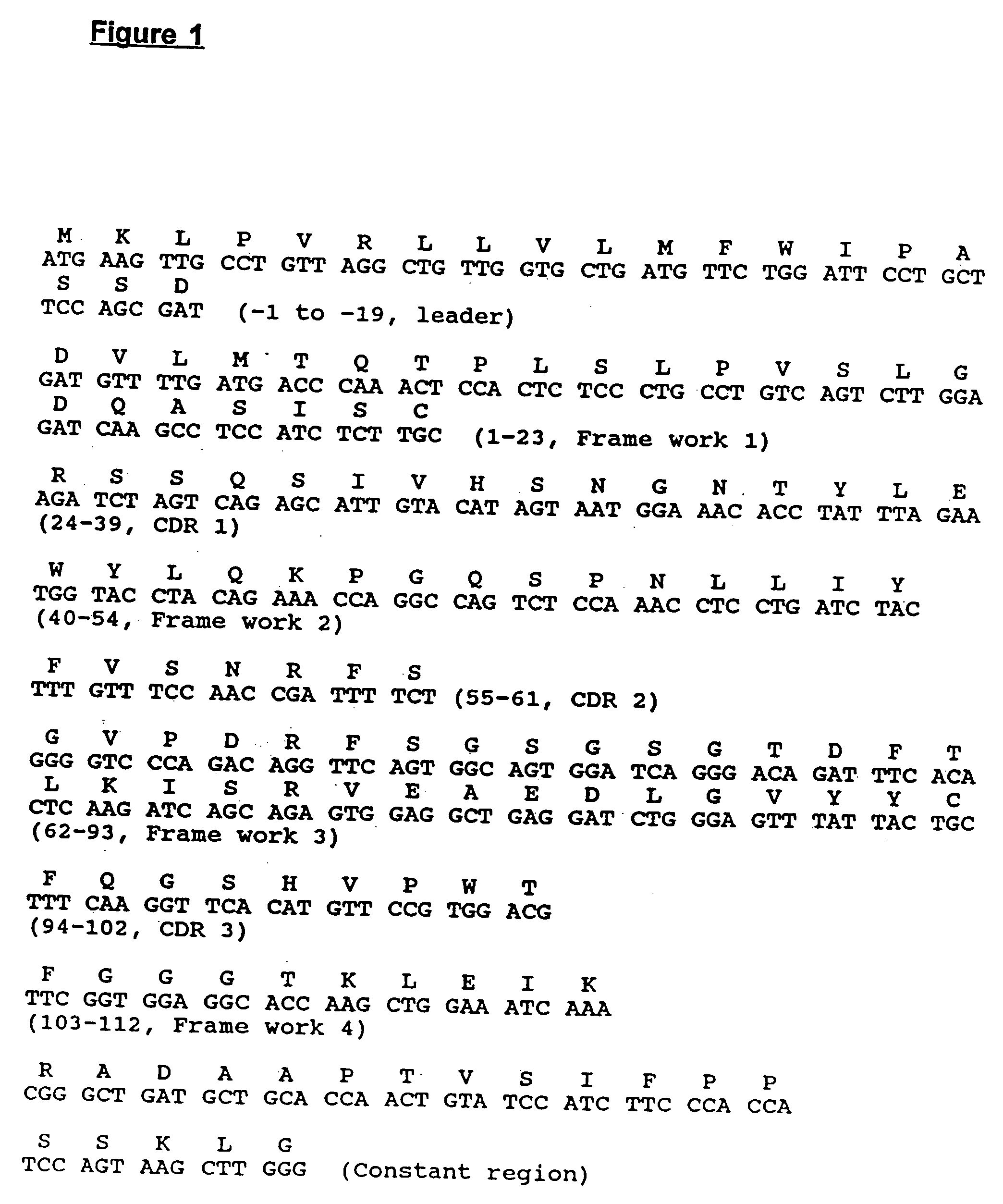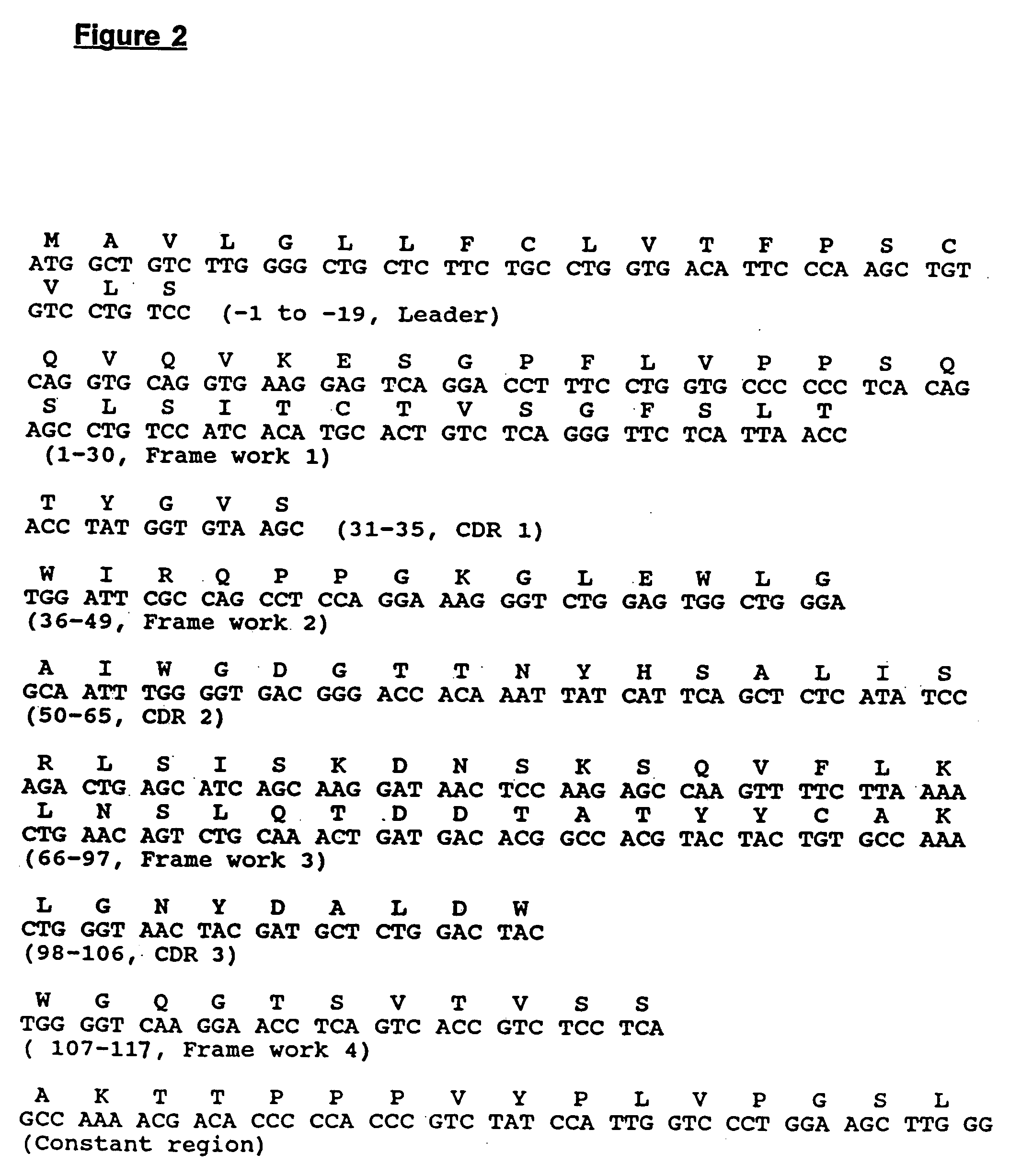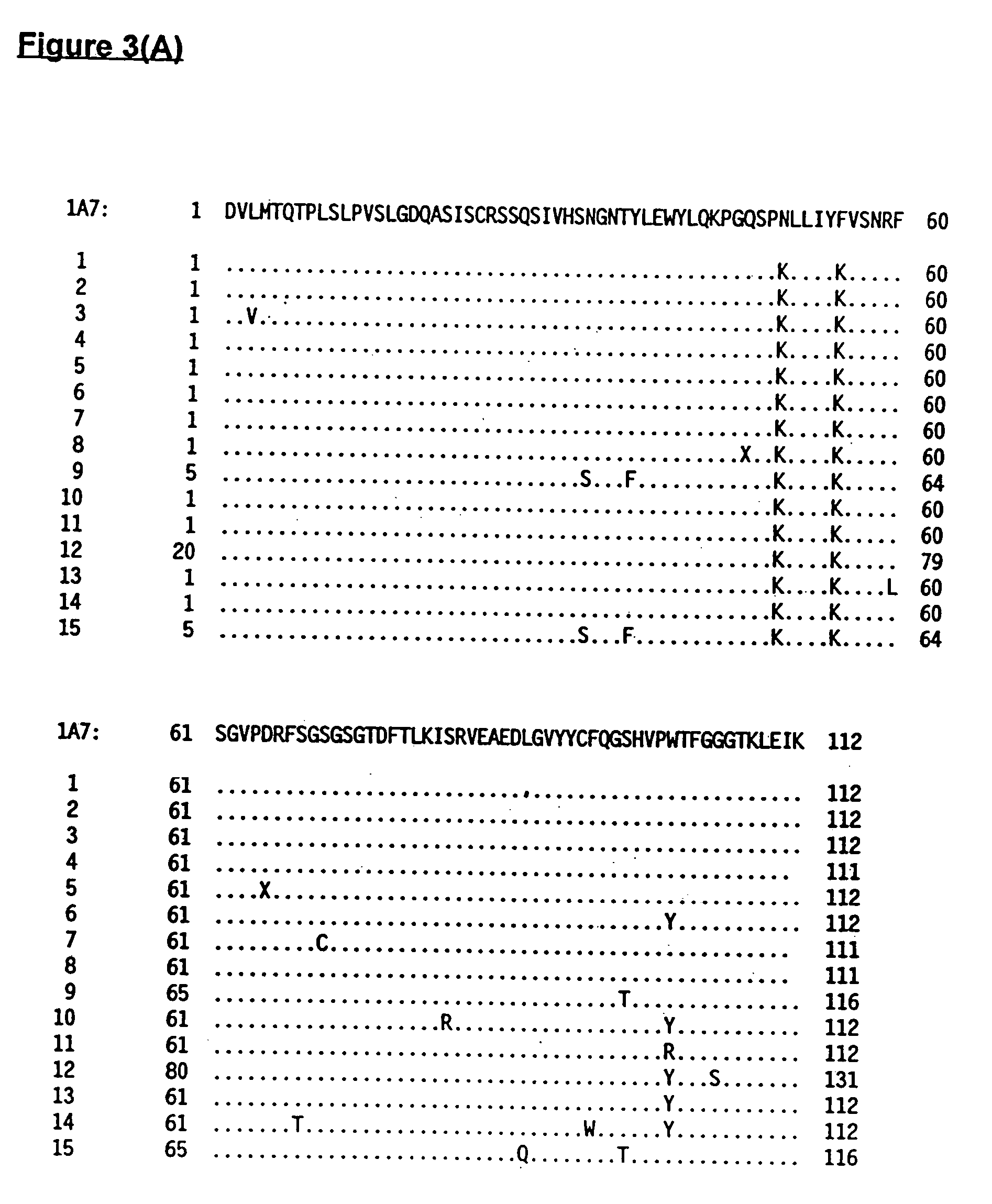Monoclonal antibody 1A7 and use for the treatment of melanoma and small cell carcinoma
a technology which is applied in the field of monoclonal antibody 1a7 and use for the treatment of melanoma and small cell carcinoma, can solve the problems of reducing affecting the survival rate of patients, so as to reduce the risk of recurren
- Summary
- Abstract
- Description
- Claims
- Application Information
AI Technical Summary
Benefits of technology
Problems solved by technology
Method used
Image
Examples
example 1
Generation and Characterization of 1A7 Anti-Idiotype Antibody
[0246] The monoclonal anti-idiotype antibody producing hybridoma cell line 1A7 was created and identified according to the following description Aspects of both the immunization procedure and the screening procedure were important to obtain an antibody with the desired specificity and functionality. 1A7 was one of a number of Ab2 that were initially produced, and was identified as the candidate with the most desirable features.
[0247] 1A7 was obtained by using the 14G2a mouse monoclonal antibody as immunogen for an anti-idiotype response. 14G2a binds to a unique epitope of GD2 that is not present on other members of the ganglioside family. Since the responding animal was also a mouse, the Ab2 generated were expected to be directed against idiotypic features of 14G2a. However, only a fraction of those would be directed against the 14G2 paratope, an even smaller proportion would be immunogenic and able of eliciting an Ab3, ...
example 2
Obtaining the 1A7 Heavy and Light Chain Sequences
[0289] The polynucleotide sequence was obtained for the 1A7 antibody by isolating messenger RNA from the 1A7 producing cell line. For each sequence determination, total RNA was isolated from 1×107 1A7 hybridoma cells. Messenger RNA was prepared by passage through two cycles of chromatography of oligothymidylate-cellulose columns. The yield of mRNA was about 10 μg. First strand cDNA was synthesized using SUPERSCRIP™ Preamplification kit (GIBCO / BRL).
[0290] To sequence the heavy chain variable region, PCRs were conducted on the cDNA using a reverse primer corresponding to amino acids 126 to 119 of the murine y, constant region:
(SEQ.ID NO:46)5′-CCCAAGCTTCCAGGGRCCARKGGATARACIGRTGG -3′
[0291] and various mixtures of forward primers, corresponding to the N-terminal leader sequences of murine variable region subgroups. The forward primer that gave a positive reaction was:
(SEQ.ID NO:47)5′-ACTAGTCGACATGGCTGTCYTRGBGCTGYTCYTCTG-3′
correspond...
example 3
1A7 as an Immunogen in Non-Human Primates
[0310] As a model more closely related to humans, the effect of anti-Id 1A7 on the induction of GD2-specific humoral responses was investigated in cynomolgus monkeys (Macaca fascicularis). The normal tissue distribution of GD2 in cynomolgus monkeys is very similar to that in humarn. As such, this primate model is ideal to gauge toxicities induced by these agents and to establish useful dosage for initial clinical trials.
[0311] Cynomolgus monkeys (two per group, 2-4 kg weight) received four intramuscular injections of purified Ab2 (2 mg) mixed with 100 μg of QS 21 as adjuvant. Control monkeys were immunized with unrelated Ab2, 3H1 mixed with QS 21 in the similar way. All injections were given at 2-week intervals. Monkeys were bled 10 days after each immunization.
[0312] The sera were analyzed for Ab3 responses by sandwich RIA and inhibition of Ab2 binding to Ab1. For these assays, the sera were pretreated with normal mouse immunoglobulin (50...
PUM
| Property | Measurement | Unit |
|---|---|---|
| median survival time | aaaaa | aaaaa |
| median survival time | aaaaa | aaaaa |
| weight percent | aaaaa | aaaaa |
Abstract
Description
Claims
Application Information
 Login to View More
Login to View More - R&D
- Intellectual Property
- Life Sciences
- Materials
- Tech Scout
- Unparalleled Data Quality
- Higher Quality Content
- 60% Fewer Hallucinations
Browse by: Latest US Patents, China's latest patents, Technical Efficacy Thesaurus, Application Domain, Technology Topic, Popular Technical Reports.
© 2025 PatSnap. All rights reserved.Legal|Privacy policy|Modern Slavery Act Transparency Statement|Sitemap|About US| Contact US: help@patsnap.com



